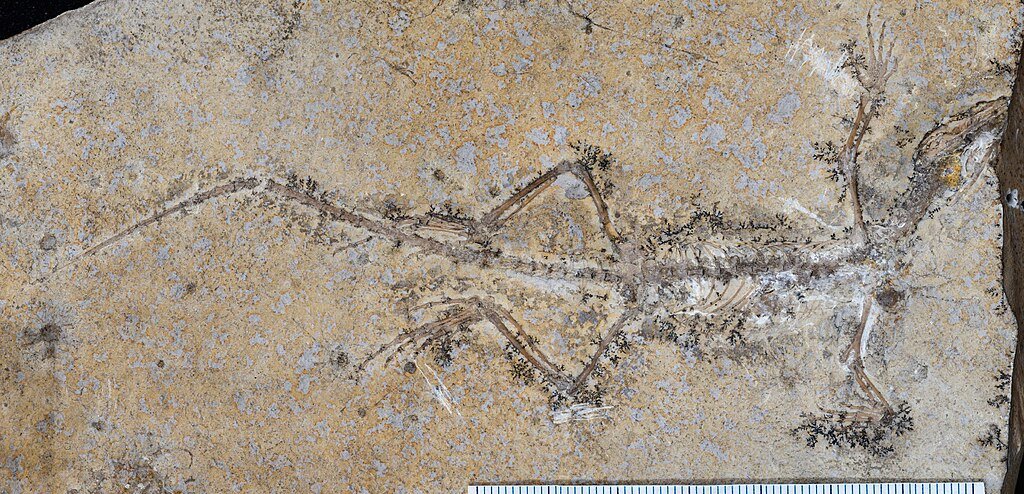A chance museum discovery has led paleontologists to identify a new species of ancient reptile, Sphenodraco scandentis, that likely lived in trees during the Late Jurassic. Published in the Zoological Journal of the Linnean Society, the study combines two fossil slabs separated for nearly a century, offering fresh insight into the evolution and ecology of rhynchocephalians, a group now represented only by New Zealand’s tuatara.
A Fossil Reunited

The original fossil, a body impression preserved in Solnhofen limestone, was housed at the Senckenberg Museum in Frankfurt since the 1930s. Its counterpart, containing most of the bones, was recently rediscovered by Ph.D. student Victor Beccari at the Natural History Museum in London. Together, the slabs form a nearly complete skeleton, allowing researchers to reclassify the specimen as a new species rather than the previously assumed Homoeosaurus maximiliani.
Anatomy of an Arboreal Pioneer

Sphenodraco scandentis exhibits unusually long limb bones relative to its small body size, a trait associated with climbing ability in modern lizards. This suggests it may be the first known truly arboreal member of the rhynchocephalian lineage. Its anatomy points to a lifestyle spent navigating the vegetation of the Solnhofen Archipelago, a region famous for preserving fossils like Archaeopteryx.
Evolutionary Significance
During the Triassic and Jurassic periods, rhynchocephalians were widespread and diverse, coexisting with dinosaurs across multiple continents. The discovery of Sphenodraco adds to the rich fossil record of the group and highlights the ecological versatility of these ancient reptiles. It also underscores the importance of museum collections and fossil counterplates in reconstructing lost evolutionary stories.
Conclusion
The reunion of two fossil halves has unveiled a new chapter in reptile evolution, one that climbs beyond the ground-dwelling norm. Sphenodraco scandentis not only expands our understanding of Jurassic biodiversity but also reminds us that sometimes, the missing piece of the scientific puzzle is hiding in plain sight.
Sources:




